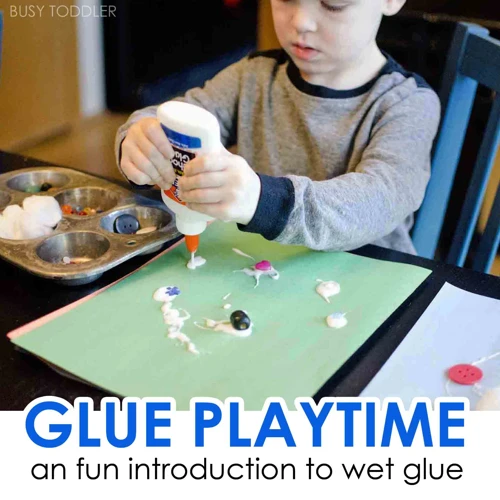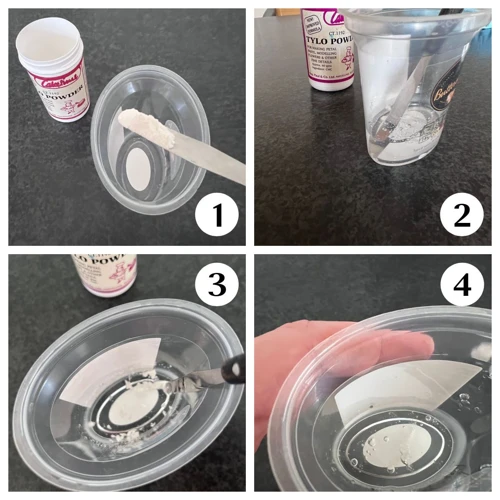When it comes to adhesives, the variety available can be overwhelming, but some products stand out for their specific advantages. In this blog post, we delve into the world of tylo glue, a specialty product known for its robust performance in diverse applications. Understanding what is tylo glue is the first step towards recognizing its potential in your projects.
What Is Tylo Glue?
Tylo glue is a versatile adhesive, often hailed for its formidable binding abilities. It’s a substance that’s designed to adhere with strength and durability, making it a go-to solution for both professional crafters and DIY enthusiasts. The formulation of this adhesive allows it to create solid bonds across various materials, which we will explore further in this post.
Origins and Composition of Tylo Glue
The origins of tylo glue can be traced back to the needs of industries seeking reliable adhesion solutions. Composed of a mix of synthetic and natural polymers, tylo adhesive is formulated to offer a high level of performance. Its composition is carefully balanced to ensure it meets the demanding requirements of its various applications.
Tylo Glue Properties
The effectiveness of an adhesive lies in its properties, and tylo glue is no exception. Its characteristics make it an attractive option for an array of bonding tasks.
Understanding Tylo Glue Strength
The tylo glue strength is a key attribute that defines its suitability for challenging jobs. It is engineered to withstand significant stress and environmental factors, ensuring that once something is bonded, it stays in place. This resilience is part of what makes tylo glue a reliable choice.
Unique Characteristics of Tylo Adhesive
In addition to its strength, tylo adhesive boasts unique properties such as water resistance and flexibility when cured. These characteristics enable it to maintain its hold even under fluctuating conditions, a trait not found in all adhesives. Moreover, its capacity to bond a wide range of materials adds to its versatility.
Tylo Glue Applications
Let’s move on to the practical side of things and explore the various scenarios where tylo glue proves invaluable.
Common Tylo Glue Uses in Various Industries
- Paper crafting and scrapbooking
- Woodworking and furniture repair
- Textile industry for fabric bonding
- Automotive repairs, particularly for interior trims
How to Use Tylo Glue for Optimal Results
To achieve the best results, understanding how to use tylo glue is crucial. Preparing surfaces by cleaning them thoroughly and applying the adhesive as directed will ensure a strong bond. It’s also important to allow sufficient curing time for the adhesive to reach its full bond strength.
Types of Tylo Glue
Different tasks may require different adhesive attributes. Consequently, there are types of tylo glue to cater to these varying requirements.
Exploring the Different Variants of Tylo Adhesive
- Quick-setting formulas for rapid application
- Longer curing types for adjustable positioning
- Specialized blends for unique materials like foams or metals
Choosing the Right Type of Tylo Glue for Your Project
Selecting the correct type of tylo glue can make all the difference in your project. Consider the materials you’re bonding, the environment they’ll be in, and the stress they’ll encounter. Matching these factors with the appropriate tylo adhesive variant will ensure optimal performance.
Working with Tylo Glue
Proper technique is as important as the product itself. Here’s a guide on how to leverage tylo glue for your projects.
Step-by-Step Guide: How to Use Tylo Glue
- Surface preparation: Clean and dry all surfaces to be bonded.
- Application: Apply the glue as instructed, typically in thin layers.
- Clamping: Press and hold or clamp the pieces together to ensure a tight bond.
- Curing: Allow the adhesive to set for the recommended time before testing the bond.
Tips and Tricks for Maximizing Tylo Glue Strength
Even distribution of the adhesive and avoiding air bubbles are crucial for maximizing tylo glue strength. Ensuring a controlled environment, free from moisture and extreme temperatures, can also enhance the curing process and final bond strength.
Tylo Glue Safety
As with any chemical product, safety is paramount. Below are some guidelines to adhere to when using tylo glue.
Health and Safety Considerations When Using Tylo Glue
Always use tylo adhesive in a well-ventilated area and wear appropriate safety gear such as gloves and eye protection. Be mindful of any fumes and follow all manufacturer’s safety instructions.
Proper Storage and Handling of Tylo Adhesive
Storing tylo glue correctly extends its shelf life and maintains its efficacy. Keep it in a cool, dry place, tightly sealed, and away from children and pets. Proper handling also includes disposing of any waste materials in accordance with local regulations.
Conclusion and Summary
As we wrap up, let’s revisit the main points about tylo glue that make it such a valuable tool.
Recap of Tylo Glue Properties and Uses
Tylo glue properties such as its strength and versatility are what make it suitable for a variety of tylo glue applications. Its ability to bond different materials and withstand harsh conditions makes it a favorite among professionals and hobbyists alike.
When it comes to various types of adhesives, it’s important to choose the right one for your project. If you’re exploring the different options, you might be curious about Tylo glue and its uses. While we delve into that, you may also find it interesting to learn about other specific adhesives. For instance, check out our articles on what LOCA glue is, which is commonly used for bonding screens in electronics, or what mulch glue is, a product used in landscaping to stabilize mulch. And for a more unique adhesive, there’s an article on what boob glue is and its role in fashion and wardrobe management. Each adhesive has its unique properties and applications, and knowing which one to use can make all the difference in your project’s success.
Final Thoughts on the Versatility of Tylo Glue
In conclusion, the versatility and performance of tylo adhesive cannot be overstated. Whether it’s for intricate craftwork or heavy-duty industrial applications, there’s a tylo glue suited for the task. Always remember the importance of safety and correct usage to ensure the best outcome for your projects.





